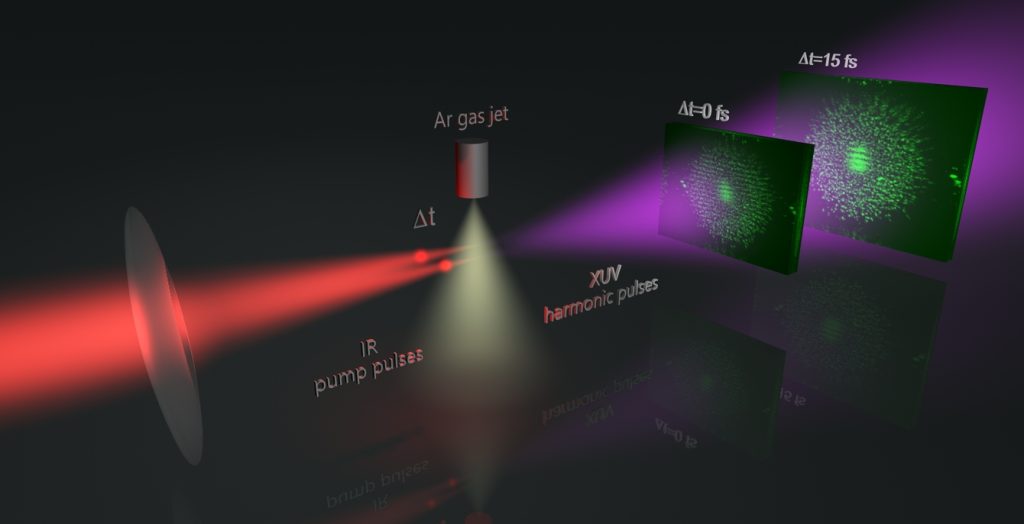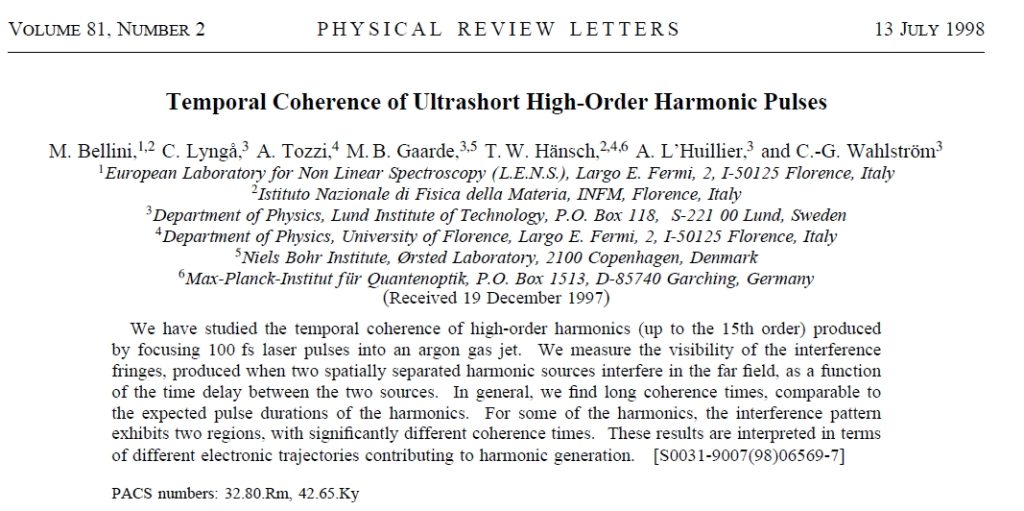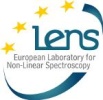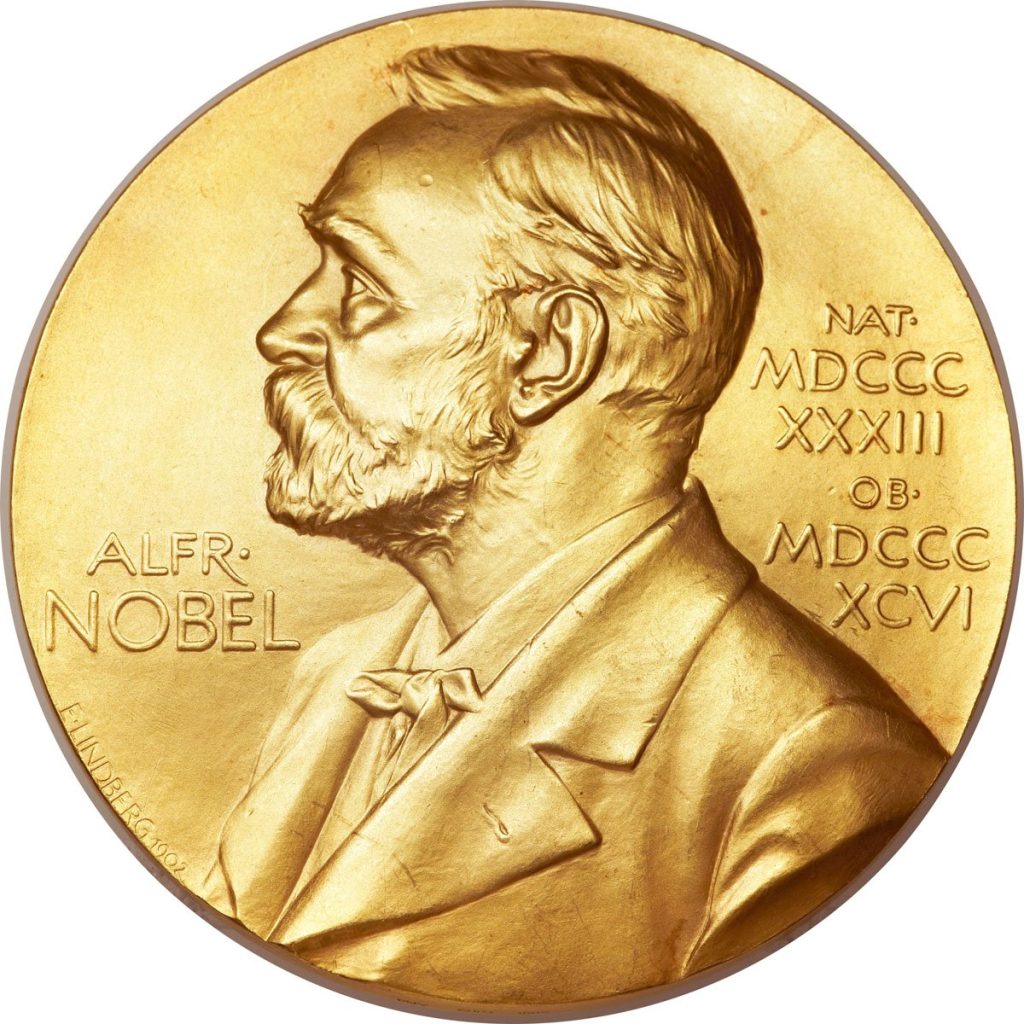
We congratulate to the three winners of the 2023 Nobel Prize in Physics and we are extremely happy to have played a little role in the long path to this award. Indeed, one of the key experiments that led to today’s prize was performed in Florence, by Marco Bellini in collaboration with Ted Hänsch and the group of Anne L’Huillier.
In 1997-1999 we performed a series of experiments in collaboration with Ted Hänsch (2005 Nobel Prize winner in Physics for the invention of laser frequency combs) and the group of Anne L’Huillier (this year’s Nobel laureate) that investigated phase coherence in the process of high-order harmonic generation.
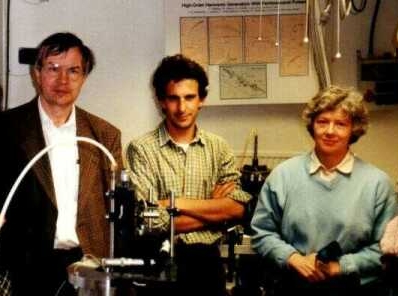
Marco Bellini (center) with Ted Hänsch (left) and Anne L’Huillier (right) at the Lund Laser Center in Lund (Sweden) in 1997, during one of the experiments of the collaboration
In particular, the experiment performed in 1997 at LENS in Florence (see more here) was the first one to demonstrate the role of the different electron trajectories in the harmonic generation process. It showed the conditions under which a train of attosecond pulses could be produced in a controlled way, and opened the path to the development of isolated attosecond pulses and to the birth of attophysics (see the official Scientific Background to the Nobel Prize in Physics 2023, by the Nobel Committee).
